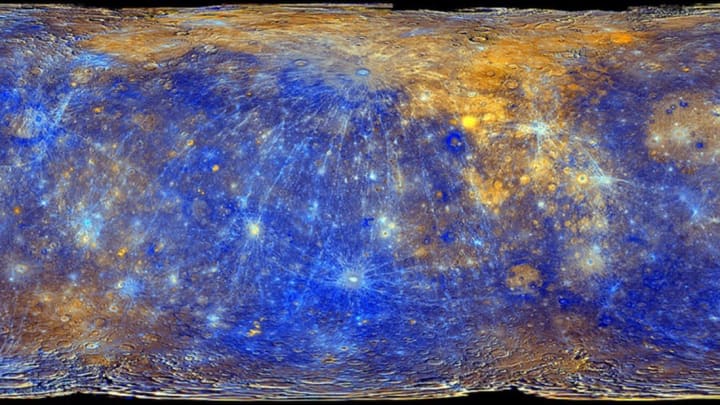Look Up! Tonight Is Your Big Chance to See Little Mercury

Mercury stepped onto the celestial stage this week, and tonight, April 1, it will reach the highest point in the sky it will achieve this year.
Approximately 45 minutes after the last sliver of the Sun disappears beneath the horizon, continue looking dead west. Cast your gaze slightly upward and you’ll notice the first suggestions of two planets. The lower of the two will be Mercury. It won’t yet be totally dark, and you’ll have about one hour to soak it all in. During that time, the celestial dome will slide downward. Mars and Mercury will fall from the sky, chased by a waxing crescent moon, which will remain out until around midnight.
Have a telescope? Mercury will appear as a disc, and as is the case with Venus, you might be able to see its phases (parts of the planet illuminated by the Sun). This is hardly as exciting as Jupiter with its bands of clouds, or Mars with its stunning ice caps, but Mercury is also a lot smaller than either planet. And you can still impress your friends by saying things like, “Ah, Mercury is waning crescent, with a half-Mercury to come!”
So set your expectations accordingly, find a nice open field, lay out a blanket, and relax until after sunset. Your local astronomy club might be hosting a Mercury viewing party, too. The weeks to come will leave Mercury washed in sunlight and hard to see, and in June it will be on the opposite side of the Sun. So if you’re going to catch sight of the closest planet to the Sun this year, you won’t have a better opportunity than tonight.
THE FIRST SLINGSHOT
The oddly adorable Mariner 10. Image Credit: NASA
The first up-close look at Mercury came in 1974 with NASA’s Mariner 10 mission. The spacecraft operated from a heliocentric orbit (i.e., it circled the Sun) and imaged and scanned Mercury on three flybys, when it and Mercury’s orbits coincided. The mission was a success in a lot of ways. It was the first to use a “gravity assist,” in which the gravity of one celestial body is used to “slingshot” a spacecraft to some other target in the solar system. This technique would become standard for space missions going forward. With respect to Mercury, it gave us our first intimate peek at the nearest planet to the Sun, providing information on its geology and magnetosphere.
It wasn’t until 2004, however, that NASA’s MESSENGER (MErcury Surface, Space ENvironment, GEochemistry and Ranging) spacecraft, built by the Applied Physics Laboratory at Johns Hopkins University, launched to unlock the most profound secrets of Mercury. After three flybys, it entered Mercury's orbit in 2011, and in the next four years, it completed 4000 orbits. (It was crashed into the planet's surface in 2015.)
Here's a 2014 view of Mercury, courtesy of MESSENGER.
In addition to mapping Mercury at a level of mind-boggling detail (the top image is an enhanced color global mosaic of the planet), MESSENGER discovered that Mercury is not the dead orb it was once thought to be, but rather, a dynamic, geologically active world. There is water ice on Mercury. It has volcanic deposits. MESSENGER data revealed that it even has active plate tectonics, once the exclusive domain of Earth. (The only other world in the solar system known to have active plate tectonics is Europa.)
We humans are heading back to the smallest planet in the solar system. In October 2018, the European and Japanese space agencies will launch BepiColombo, a Mercury spacecraft designed to study its magnetosphere and surface. It will arrive in December 2025, with its prime mission lasting one year.